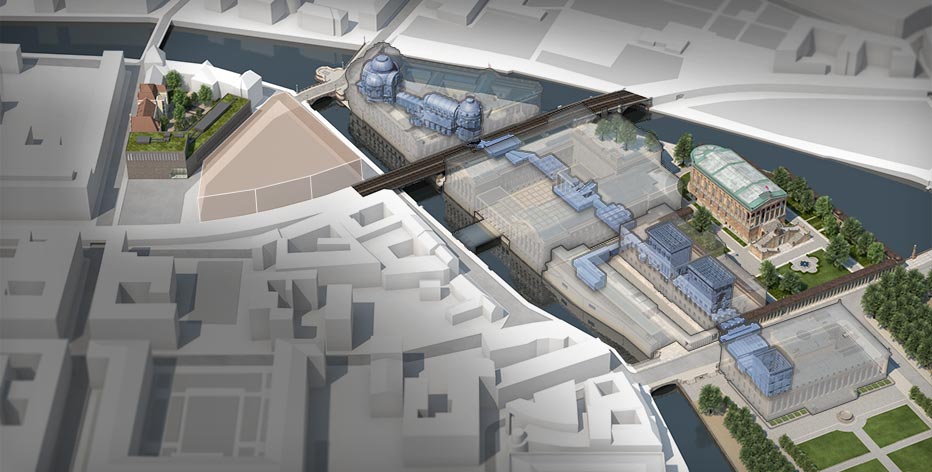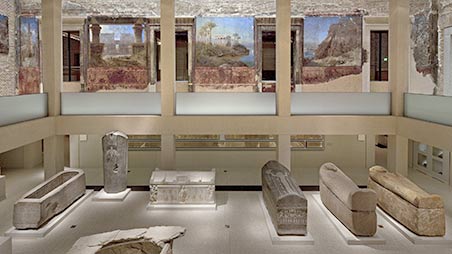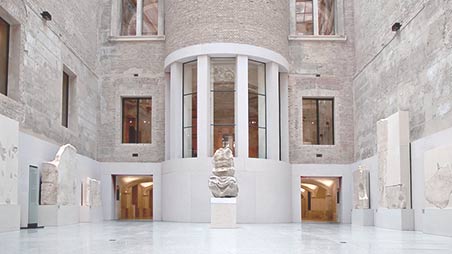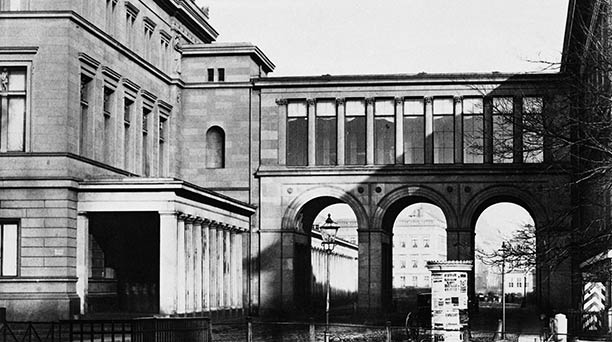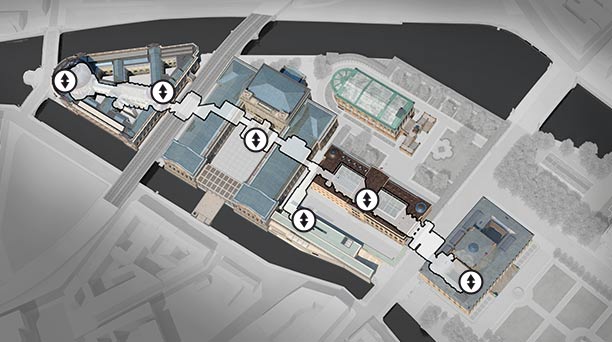Establishing Connections
Each of the buildings on the Museum Island Berlin has its own, very individual history. At the same time, all the museum buildings and the collections exhibited in them are related to each other in terms of content. These content-related links will find architectural expression in the Archaeological Promenade which will connect four of the five museums to each other at the basement level of the buildings. It will present the large themes of cultural history, drawing on all the archaeological collections housed on the Museum Island.
The Promenade will extend from the Altes Museum via the Neues Museum and the Pergamonmuseum to the Bode-Museum. In addition, visitors will be able to reach it directly from the new reception building, the James-Simon-Galerie.
